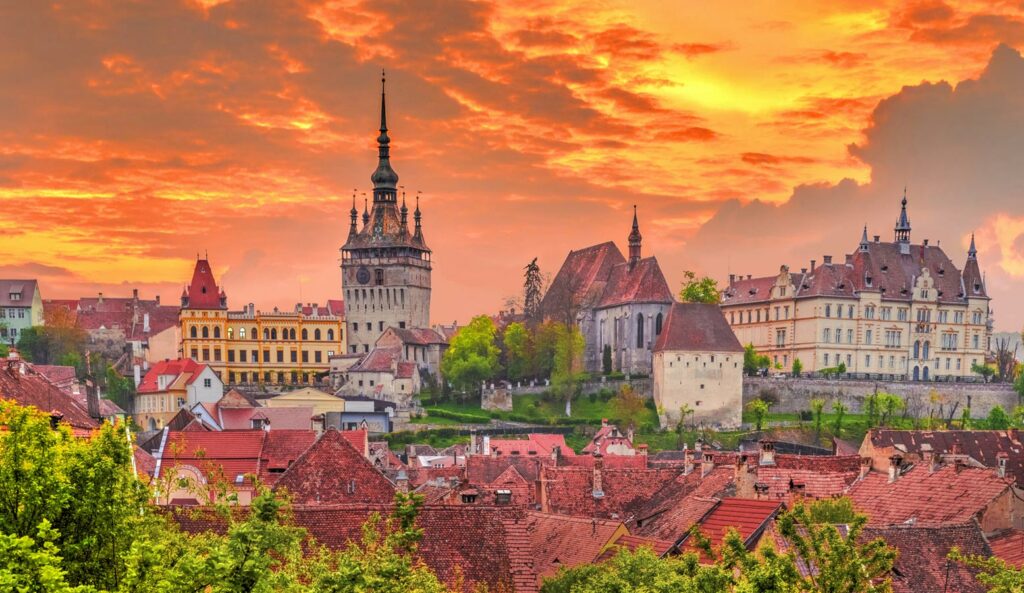Sighișoara Citadel, Romania: A Timeless Jewel of Medieval Architecture and Heritage

Introduction:
Nestled amidst the rolling hills of Transylvania, the Sighișoara Citadel stands as a timeless testament to Romania’s rich medieval history and architectural heritage. With its picturesque cobblestone streets, fortified walls, and well-preserved medieval buildings, the citadel exudes an air of romance and nostalgia, transporting visitors back to a bygone era of knights, merchants, and craftsmen. In this extensive article, we embark on a captivating journey through the storied streets and ancient alleys of the Sighișoara Citadel, exploring its historical significance, architectural splendor, and enduring legacy as one of Europe’s most charming medieval towns.
Historical Background:
The history of the Sighișoara Citadel dates back over 800 years to the 12th century when it was founded by German craftsmen and merchants known as the Saxons of Transylvania. Built atop a hill overlooking the Târnava Mare River, the citadel served as a strategic stronghold and trading hub, attracting settlers from across Europe and giving rise to a vibrant and prosperous community.
Over the centuries, Sighișoara grew into a bustling medieval town, with its fortified walls, towers, and churches serving as symbols of its wealth and power. The citadel played a crucial role in the defense of Transylvania against invading armies and rival kingdoms, earning it a reputation as one of the region’s most formidable fortresses.
Architectural Splendor:
The Sighișoara Citadel is renowned for its well-preserved medieval architecture, which reflects a blend of Gothic, Renaissance, and Baroque styles. The heart of the citadel is its historic Old Town, a maze of narrow streets and alleyways lined with colorful buildings, quaint shops, and cozy cafes.
One of the most iconic landmarks of the Sighișoara Citadel is the Clock Tower, a towering structure that dates back to the 14th century and serves as the symbol of the town. Rising over 60 meters above the citadel, the Clock Tower offers panoramic views of the surrounding countryside and serves as a reminder of Sighișoara’s rich medieval heritage.
Other notable architectural features of the citadel include the Church on the Hill, a medieval church known for its stunning frescoes and Gothic architecture, and the Vlad Dracul House, the birthplace of Vlad the Impaler, the inspiration for Bram Stoker’s Dracula.
Cultural Legacy:
The Sighișoara Citadel holds immense cultural significance as a symbol of Romania’s medieval heritage and national identity. Over the years, the citadel has served as a center of trade, culture, and craftsmanship, attracting artists, musicians, and scholars from across Europe.
Today, the Sighișoara Citadel is a UNESCO World Heritage Site and a popular tourist destination, attracting visitors from around the world who come to marvel at its architectural splendor and explore its rich history. Guided tours, cultural events, and artisan workshops offer visitors the opportunity to immerse themselves in the vibrant atmosphere of medieval Sighișoara and learn about its fascinating past.
Conclusion:
In conclusion, the Sighișoara Citadel stands as a timeless jewel of medieval architecture and heritage, a testament to Romania’s rich history and cultural legacy. From its fortified walls and towering towers to its charming streets and historic buildings, the citadel continues to captivate and inspire visitors from around the world, offering a glimpse into the vibrant tapestry of Transylvania’s past. As we wander through its ancient alleys and marvel at its architectural splendor, we are reminded of the enduring power of history, culture, and the human spirit. The Sighișoara Citadel truly is a treasure of Romania, a living testament to the resilience and creativity of generations past, and a symbol of the country’s enduring legacy as a crossroads of cultures and civilizations.




